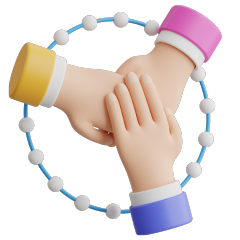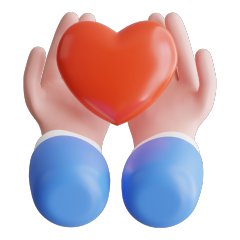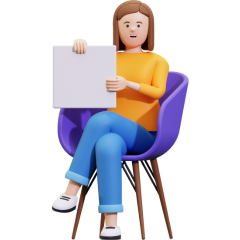Common foot problems in older adults
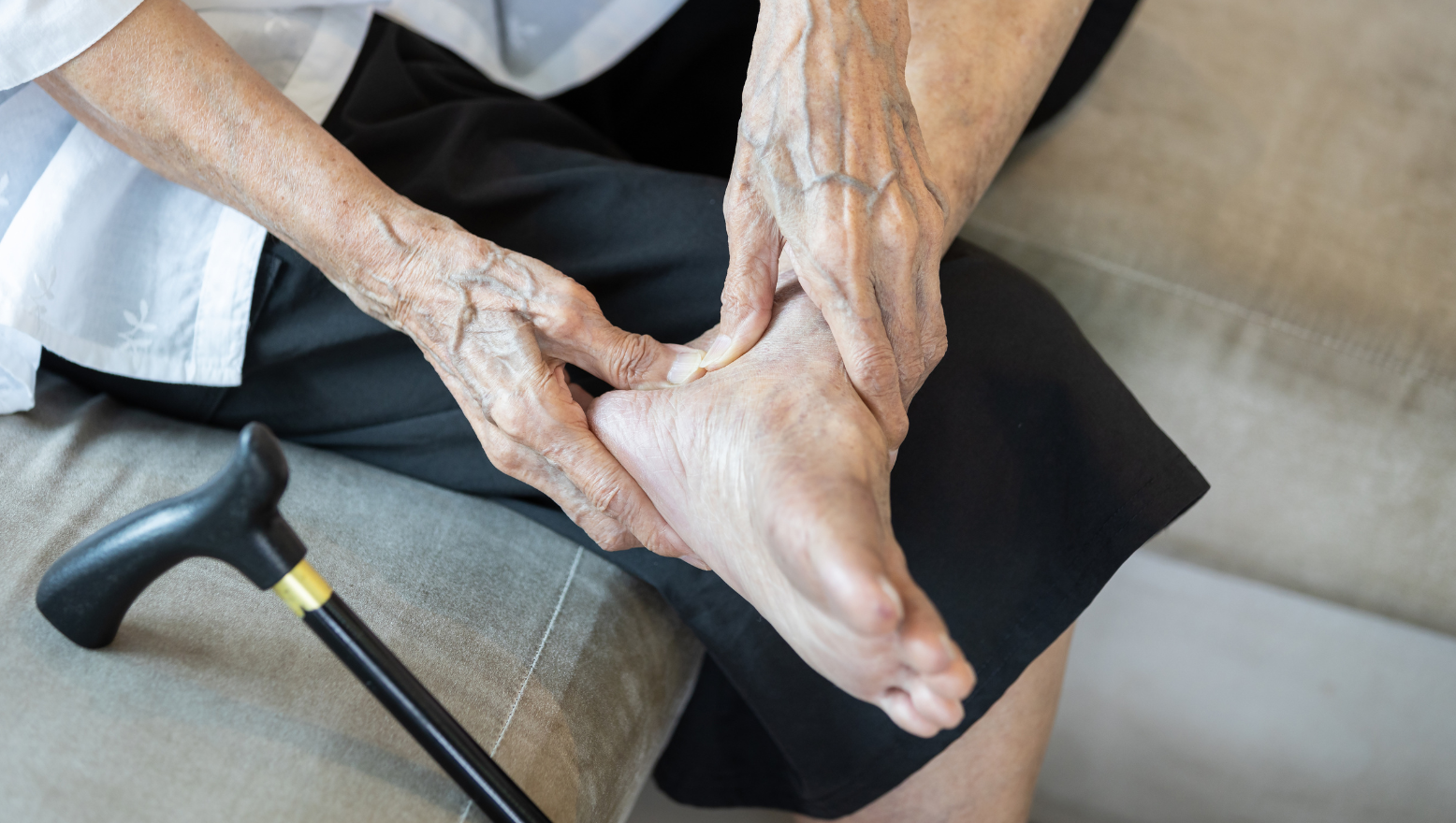
Common foot problems in older adults can impact mobility, comfort and independence. Learn about the most common issues, how to care for your feet at home and the types of support available.
Table of Contents
Our feet carry the stories of every step we’ve taken, including the daily challenges of getting around safely and comfortably. Foot health might not always be the first thing we think about, but it plays an important role in maintaining a person’s independence, mobility and quality of life.
Here’s what you need to know about common foot problems in older adults, what to look out for and how you can care for your feet to keep moving confidently.
Why foot health matters as you age
Your feet work hard every day, and over the years, wear and tear can lead to issues that affect your comfort and stability. Foot pain and discomfort can limit your ability to walk, exercise and even do everyday tasks like shopping or meeting friends, affecting your independence and emotional wellbeing.
Foot issues can also affect your balance and increase the risk of falls, which are a common cause of injury in older adults.
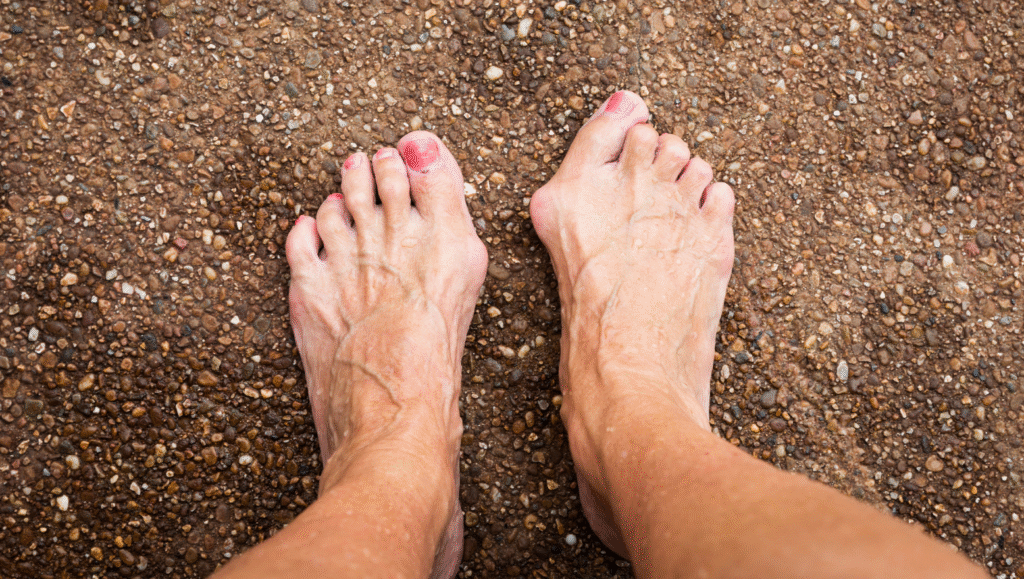
The good thing is that many foot problems can be managed or prevented with early attention and good care.
Related page: Preventing falls in older Australians – Leora Healthcare
Common foot problems in older adults
In Australia, foot problems are closely monitored under aged care to help prevent falls, manage pain, and support mobility.
Here are some common foot problems older adults may face:
1. Falls and balance-related foot issues
Foot pain and changes in foot shape can affect your balance, making falls more likely. Conditions like flat feet, nerve damage, or painful calluses can alter how you walk, impacting stability.
2. Diabetic foot problems
Older adults living with diabetes may experience poor circulation and nerve damage (peripheral neuropathy), which can reduce sensation in the feet. This makes it harder to notice cuts, sores, or infections, which can lead to serious complications if not managed early.
3. Arthritis
Arthritis, including osteoarthritis and rheumatoid arthritis, can cause joint pain, stiffness and swelling in the feet and make it uncomfortable to walk and limiting mobility. It can also contribute to deformities like bunions and hammertoes.
4. Bunions and hammertoes
These are changes in the alignment of your toes, often causing pain and making it difficult to find comfortable shoes. Bunions appear as a bony bump on the side of the big toe, while hammertoes cause the toe to bend abnormally.
5. Corns and calluses
Thickened areas of skin caused by pressure or friction from footwear or changes in foot shape. While they might seem minor, they can become painful and lead to infections if not managed properly.
6. Dry skin and cracked heels
Ageing skin loses moisture, and cracked heels can become painful and increase the risk of infection if not treated with regular moisturising and care.
7. Fungal infections
Conditions like athlete’s foot (a fungal infection between the toes) or fungal toenail infections can cause itching, discomfort, discolouration and thickening of the nails which makes it harder to care for.
8. Swelling (oedema)
Foot and ankle swelling is common in older adults due to reduced circulation or medical conditions like heart disease. Swelling can make it harder to wear shoes comfortably and may contribute to skin issues.
Signs you shouldn’t ignore
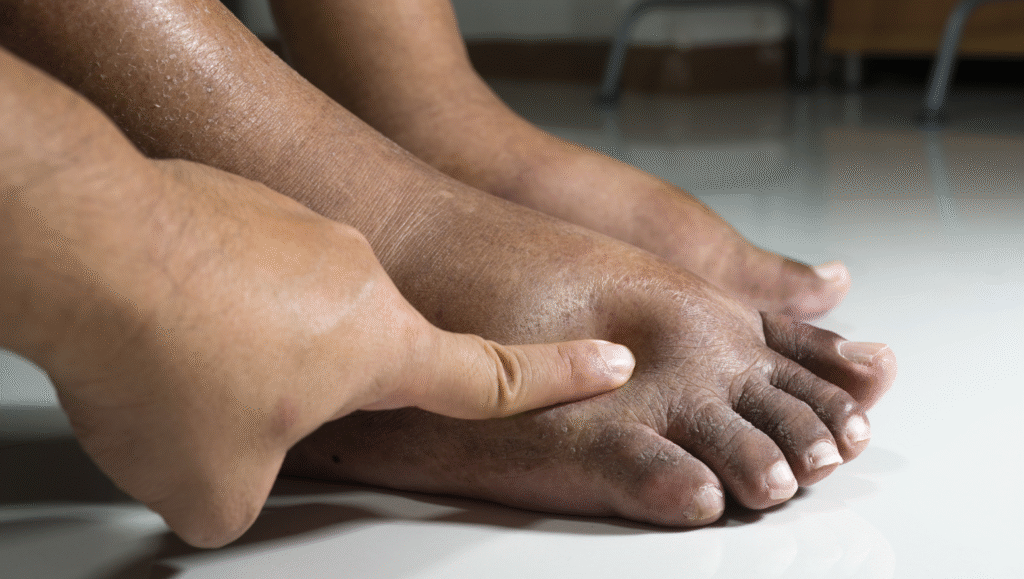
Regularly checking your feet is important. Seek medical advice if you notice:
- Persistent pain in your feet or toes
- Swelling, redness, or warmth
- Changes in the colour or temperature of your feet
- Numbness, tingling, or a “pins and needles” feeling
- Cuts, sores, or wounds that aren’t healing
- Difficulty walking or maintaining balance
Early attention to these signs can prevent small problems from becoming serious.
How to care for your feet at home
Taking care of your feet doesn’t have to be complicated, but it does need to be consistent. Good foot care helps you stay comfortable, maintain your balance and prevent small issues from becoming bigger problems.
If it’s difficult to care for your feet on your own, consider asking for help from a family member or a podiatrist, especially if you have trouble reaching your feet or have conditions like diabetes.
Here are some simple steps you can take:
- Wash your feet daily using warm (not hot) water, and dry them thoroughly, especially between the toes, to prevent infections.
- Moisturise your feet to prevent dry, cracked skin, which can lead to discomfort or infections. Avoid moisturising between the toes to prevent fungal issues.
- Wear well-fitting, supportive shoes that protect your feet, cushion your steps, and allow your toes to move comfortably. Avoid walking barefoot to reduce the risk of cuts and injuries.
- Trim your toenails carefully, cutting straight across to help prevent ingrown nails, which can be painful and lead to infections.
- Check your feet regularly for any changes such as redness, swelling, cuts, blisters or changes in skin texture. If you notice anything unusual, seek advice immediately.
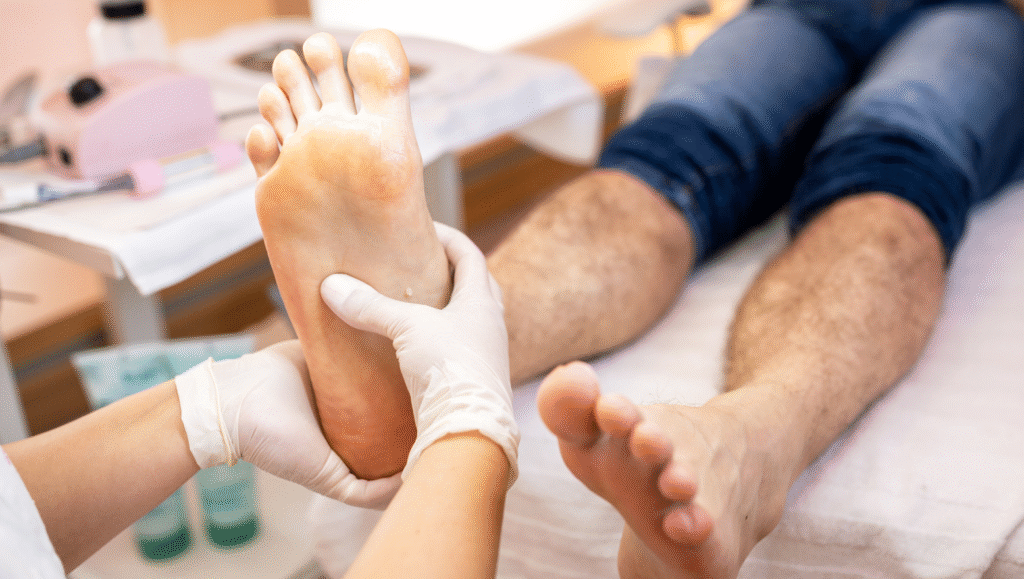
Caring for your feet is an important step in staying active and independent as you age. Small, daily habits can make a big difference in keeping you moving confidently.
Foot health and staying independent at home
In Australia, aged care services are designed to help older adults live safely and comfortably at home for as long as possible.
Depending on your needs and eligibility, coverage may include:
- Personal care support, including foot hygiene and assistance with dressing
- Help with socks, shoes and managing appropriate footwear to prevent falls and discomfort
- Access to podiatry and physiotherapy services, which are often included in aged care plans to address foot health, mobility and balance
- Assistance with household tasks and transport to medical or allied health appointments, including podiatry visits
These services are part of maintaining your independence while ensuring your feet receive the care they need to keep you moving safely.
If you or a loved one are struggling with foot care at home, it’s worth speaking with your GP or contacting My Aged Care (1800 200 422) to discuss accessing these supports.
A step towards comfort
Your feet have carried you through many seasons of life. Giving them the care they deserve can help you keep enjoying the activities and connections that matter most.
At Leora, we understand that caring for your feet is part of caring for your overall wellbeing. Our aged care services help older adults maintain independence, dignity and comfort whether it’s assistance with daily care, mobility or accompanying you to therapies.
If foot pain or mobility challenges are affecting your day-to-day life, we’re here to help you continue living well at home.
We have an expansive network of local providers such as podiatrists, physiotherapists, gardeners, meal kit deliveries and more! We won’t approve providers until you are 100% satisfied with your services and products.
Take a moment to check in with your feet today. Small steps in care can help you keep moving confidently, one step at a time.
